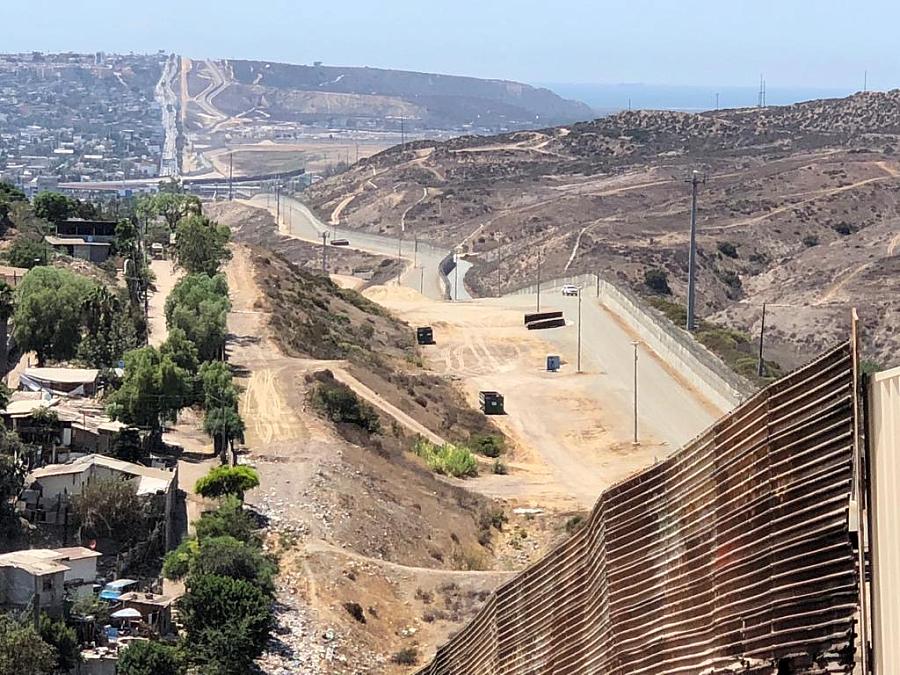Latinos living along the border are facing dire challenges amid COVID-19

(Photo by Fernando Escamilla)
The COVID-19 crisis has revealed stark financial and health disparities. Latinos are one of the most hardest hit communities.
They comprise 17.6% of American workers, but they make up 18.9% of unemployed workers, according to May U.S. labor figures.
According to a recent study by Pew, 61% of Latinos took a pay cut or know someone who did, compared to the 29% of white workers during this outbreak. In the border communities such as San Ysidro, California, businesses that rely on sales from both sides of the border are struggling. Data from Sandag shows unemployment rates are soaring in the San Ysidro zip code 92173, with an estimated 36.1% unemployed. The broader San Diego region hit at an all-time high of 30.1% unemployment.
Many Latinos lack savings for “rainy days.” Mostly live paycheck to paycheck. The San Ysidro community’s average per capita income is $17,199. Among Latinos, about 70% have no assets in retirement accounts.
Border communities like the San Ysidro-Tijuana region are still partially closed until at least August 21 for non-essential travel, and continue to struggle since the closure in March. A recent study from UC San Diego Center for U.S-Mexican Studies estimated more than $6 billion of trade is exchanged between the U.S. and Mexico in the greater San Diego region per year.
Directors of the San Ysidro Chamber of Commerce said in a recent interview that the pandemic could result in devastating consequences for small business in the border town. They estimate 30% of businesses could shut down in the area. Only those businesses with large monetary cushions could last this long and those with slim margins may have to close their doors permanently because of the lack of income revenues and the influx of customers coming from sister cities such as Tijuana.
Immigrants in border communities typically lack the access to qualified medical services to treat an outbreak such as the coronavirus. San Ysidro has no hospitals, only clinics, and people rely on such services for diagnosis and treatment. There has been an alarming rate of cases in border communities. The increase of cases of COVID-19 in the border contributed to surging case numbers in both Mexico and the United States in June.
Despite the partial closure of the southern border, the virus is still moving between the two countries. Officials from the Unites States and Mexico have urged their citizens to be cautious during the pandemic, but infections continue to mount.
Why are local and small hospitals near the border at capacity and what’s causing this disparity?
Experts believe the problem is driven by a lack of personal protective equipment, and the lack of testing on the Mexican side of the border.
According to the U.S Centers for Disease Control and Prevention, for every 1,000 Americans, 95 receive the COVID-19 test. In Mexico, for every 1,000 Mexicans, four receive the test, according to the Mexican Ministry of Health.
On average Latinos suffer from underlying conditions that put them more at risk of the virus, including diabetes, high blood pressure, and asthma. As a group, they represent the largest ethnic racial group in the United States that lacks health insurance. For migrants, with no status, the situation is even more adverse many rely on home remedies to fight the virus it if they get infected.
With the support of the 2020 National Fellowship, I will explore, research and report the impact of this worldwide pandemic in communities along the border, broadcasting my stories on Radio Bilingue’s airwaves.
I’ll be taking a closer look at the circumstances making the current situation so dire. How are factors such as multifamily dwellings, lack of financial resources, concentrations of essential workers, underlying health conditions, and the collapse of business contributing to the crisis? What will the virus’ devastating toll mean for future generations?

